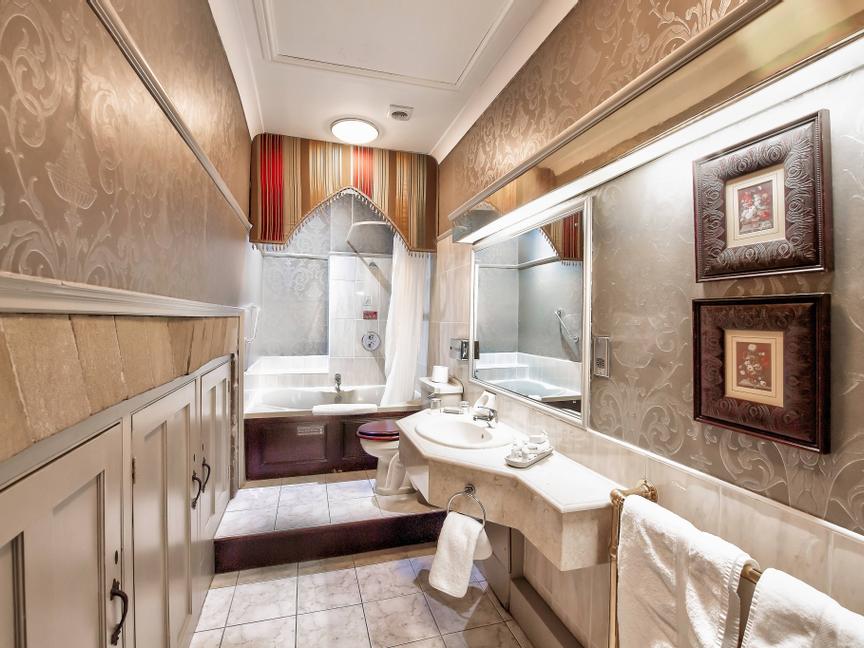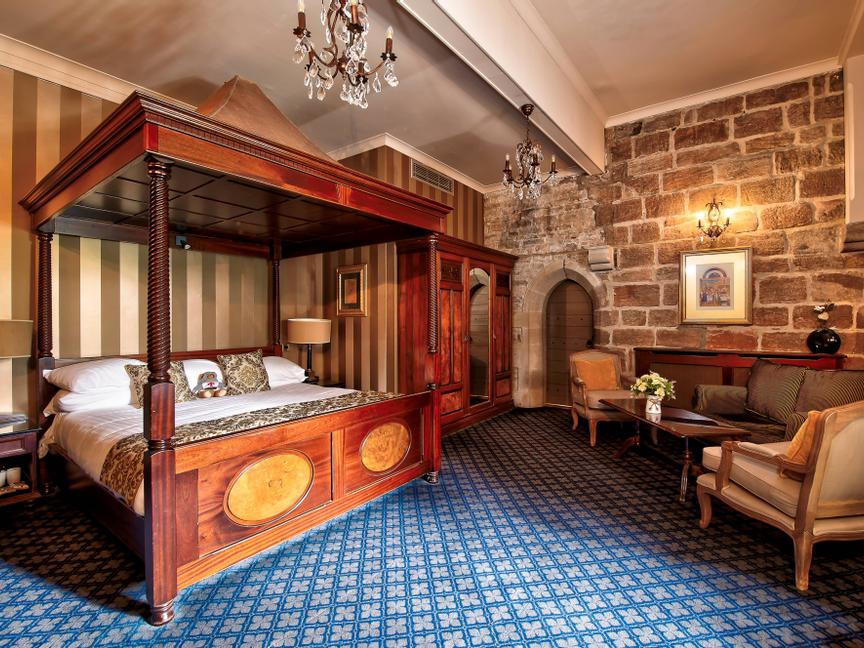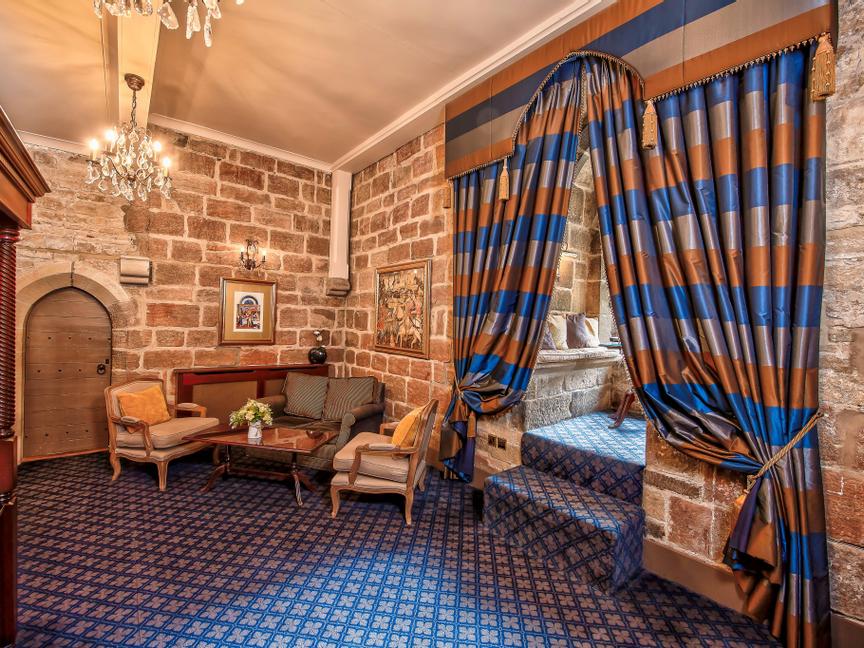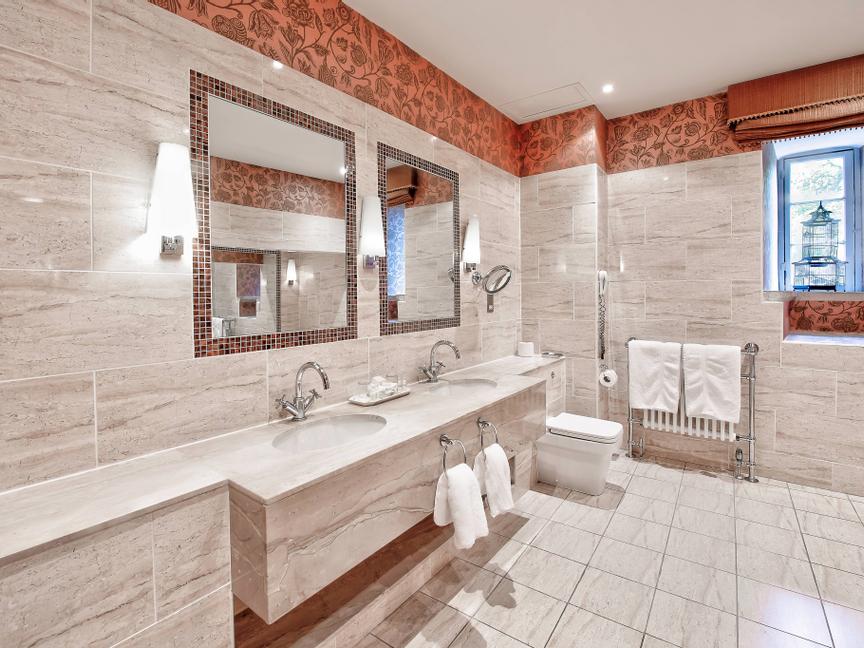Feature Rooms
Our five feature castle bedrooms have been individually designed to offer the ultimate in luxury accommodation.
Chandeliered high ceilings, exposed stonework and window seats set into the walls give the feeling of grandeur only to be expected from a 14th century Castle.The impressive, individually designed, en suite bathrooms are perfect for relaxation and pampering and some even feature spa bath or a private sauna giving you 21st Century luxury.
Content Blocks
THE DERWENTWATER ROOM
Features:
Seating area around original fireplace
Window step set into 7 ft walls
Super king-size four-poster bed
Writing desk, wi-fi and Sofa Bed
Luxury en-suite bathroom with shower over the bath
High ceilings, original Castle features





History of the name
In 1705 the Langley Estates became the property of the Earls of Derwentwater, Viscounts Langley. James, the 3rd Earl and his brother Charles were strong Jacobites and took leading parts in the "Glorious Rebellions" of 1715 and 1745 which ended the Stuart Dynasty. Both brothers were captured at Preston in 1715. Charles escaped to France and James was executed. Charles returned to England to aid the 1745 Rebellion, but was caught and beheaded as well.
On the roadside between Haydon Bridge and Langley Castle is a stone cross with inscription, which was erected to commemorate the execution of James and Charles.
THE JOSEPHINE ROOM
Features:
Window seat set into 7 ft walls
Half tester queen-size double bed
Spa Bath
Sofa bed



History of the name
The Josephine Room is named after Josephine d'Echarvines, who married the local historian Cadwallader John Bates in 1895.
Upon his death in 1902 Josephine dedicated herself to carrying on Bates' work in the restoration of Langley Castle. Josephine was granted an audience with Pope Leo XIII in 1902 and given permission to build the Chapel on the roof which was to be in memory of Cadwallader Bates. She spent the next 20 years alone at Langley with just her memories, until her death in 1932. She is buried within the grounds, alongside her husband.
THE RADCLIFFE ROOM
Features:
Window seat set into 7 ft walls
Super king-size four poster bed
Sofa bed and seating area
Sunken circular bath and private sauna, shower WC







History of the name
Sir Edward Radcliffe's connection with Langley Castle began in the 16th century when his grandfather leased one of the baronies from Henry VIII in 1514. Sir Edward bought the Langley Barony from the Earl of Annandale in 1631. In fact, he busied himself buying numerous properties, including the lucrative Alston lead mines, so that he could proclaim himself as top aristocrat in Northumberland.
Due to events in the civil war all his properties were impounded. His son quickly raised £10,000 by selling his mothers manors in Yorkshire, so redeeming all his fathers properties. However, he cared little about Langley Castle and so let the property to the West in 1671 for an annual rent of £30.00.
THE GREENWICH ROOM
Features:
Super king-size four poster bed
Sofa bed
Window seat set into 7 ft walls
Spacious bathroom with large bath and rain shower
Dressing room
Air-conditioning





History of the name
In the year 1749, Langley Castle was seized by the crown from the Radcliffe family and was given to the governors of the Royal Hospital for Seaman in Greenwich. The Hospital only had an interest in this gift purely as a source of income from the associated rented farms, lead mines at Alston and smelting mills at Langley.
The Castle was left in the hands of the hospital governors until 1882 who, when on discovering that the mines and smelting mills were suffering badly from foreign competition, were quick to sell. They found a buyer in Cadwallader John Bates, a former Sheriff of Northumberland.
THE TOWER ROOM
Features:
Original fireplace
Mood lighting
Seating area
Queen-size four poster double bed
Situated in the top most turret of the Castle
Walk-in rain shower (no bath)




History of the name
Being 'Sent to the Tower' in centuries past could result in losing one's head. At Langley Castle in the 21st century, the Tower Room provides a standard of comfort undreamt of by past treasoners.
James Radcliffe who succeeded to the family honours as Earl of Derwentwater, Viscount Langley, opposed the 1705 Glorious Revolution which unseated the Stuart Dynasty. His part as a leader in the Jacobean Rebellion of 1714 led to his capture at Preston and his subsequent execution at the Tower of London in 1716. His brother Charles was also beheaded some forty years later in 1746 for his involvement in the Rebellion. A stone cross, situated between Langley Castle and Haydon Bridge, commemorates their deaths. It reads; "To the memory of James and Charles, Viscounts Langley, Earls of Derwentwater, beheaded on Tower Hill, London, 24th February, 1716, and 8th December, 1746 for loyalty to their Lawful Sovereign".





